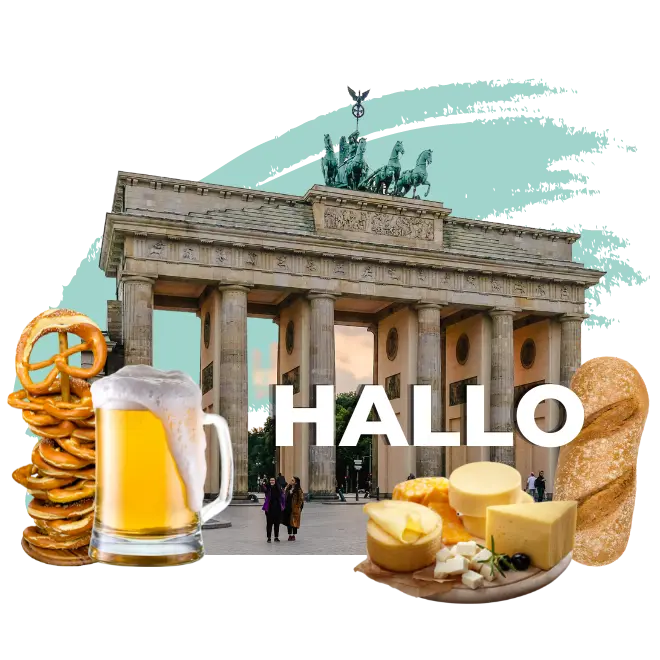GERMAN
Explore Langma’s German Language Course
Langma International offers a comprehensive German language course aligned with the Common European Framework of Reference for Languages (CEFR) levels, spanning from A1 (Beginners) to C2 (Proficiency). We assist learners in achieving success in their German language learning journey, focusing on key skills such as listening, reading, writing, and speaking. Our expert trainers ensure practical usage of language, incorporating authentic German course materials to build language competency and employing effective, efficient methods of German language learning. Our interactive on-site and online classes encourage students to participate in group discussions, role-play, and extempore. Langma’s German programme assures that students can comprehend a wide range of grammar and vocabulary. Along with German language learning, we offer insight into German culture and lifestyle. Langma International is also a preparation centre for German proficiency exams like Goethe Zertifikat, TESTDAF, DSH, ÖSD, FSP, Telc, ECL, and more.
Germany
The Federal Republic of Germany is situated in central Europe, with a population of about 84 million, making it the second-most populous country in Europe. It shares borders with various countries, including Denmark, Poland, Austria, the Czech Republic, Switzerland, France, Luxembourg, Belgium and the Netherlands, and has northern coastlines on the Baltic and North Seas. Germany is a democratic country known for its diversity, deep history, and lively, rich culture. Some major cities in Germany include Berlin (the capital), Munich, Cologne, and Hamburg.
German Cuisine
Traditional German cuisine features hearty regional specialities. Pork and veal are common in dishes such as Bratwurst, Schweinshaxe, Schnitzel, and Frikadellen. Popular desserts include Schwarzwälder Kirschtorte (Black Forest cake), Apfelstrudel, Lebkuchen, and Stollen. Beer is Germany’s most popular beverage and is celebrated at many festivals. The country also has a strong wine tradition, especially in regions such as the Mosel Valley, known for Riesling. Jägermeister, a well-known herbal liqueur, also originates from Germany.
German Festivals and Costumes
German festivals are celebrated with music, food, and dancing, featuring live performances, regional cuisine, colourful parades, and bustling street markets. Each region in Germany has distinct traditional costumes. In Bavaria, men wear Lederhosen (leather trousers ending above the knee), while women wear Dirndls (a bodice, blouse, full skirt, and apron). These outfits are typically worn at carnivals and festivals.
German Art and Literature
German-speaking authors have produced classics such as Goethe’s “Faust,” Kafka’s “The Metamorphosis,” Mann’s “The Magic Mountain,” and Hesse’s “Siddhartha.” The first magazine was printed in German: “Erbauliche Monaths-Unterredungen,” published monthly from 1663 to 1668. Germany hosts the Frankfurt Book Fair, the world’s largest, attracting publishers and literary enthusiasts from around the globe. German art has evolved alongside the nation’s history. The German Renaissance of the 15th and 16th centuries produced influential artists, most notably Albrecht Dürer, who excelled in oil painting, printmaking, engraving, and writing. In the late 18th and early 19th centuries, artists often depicted natural landscapes and mystical themes, as seen in Caspar David Friedrich’s “The Cross Beside the Baltic” (1815).
German Music and Dance
Traditional German music and dance vary by region, with prominent genres including Volksmusik and Oompah. Volksmusik, common in the Bavarian Alps, incorporates regional dialects and instruments such as guitars, mandolins, accordions, and flutes. Oompah music features a steady brass rhythm from trombones, trumpets, or tubas, supported by accordions, drums, and clarinets. Schlager, another popular style, is also considered folk music. While traditional music remains significant in German culture, classical composers like Beethoven, Bach, Schumann, and Strauss have achieved lasting global influence. Their works are regularly performed in major German venues, including the Berlin Philharmonic and the Elbphilharmonie in Hamburg.
German Architect
Germany offers a rich architectural heritage, from ancient Roman structures to modernist designs. The country has 52 UNESCO World Heritage Sites, many of which are architectural landmarks. Trier, Germany’s oldest city, features Roman sites such as the Porta Nigra, Römerbrücke, and Imperial Baths. Gothic architecture is prevalent across Germany, with Brick Gothic widespread in the north, as seen in Lübeck’s Marienkirche and the Holsten Gate. Timber-framed houses are another hallmark of late-medieval architecture, with over 1,300 examples in Quedlinburg alone.
The German Language
German is the official language of Germany, Austria, and Switzerland and is spoken by over 130 million people worldwide. It is a member of the West Germanic language family. German is known for its long compound words, some of which are up to 79 letters. Its alphabet consists of 26 Latin letters, three umlauts (ä, ö, ü), and the eszett (ß). Germany has several regional dialects, including Bavarian and Saxon. The government officially recognises four minority languages, namely Upper and Lower Sorbian, Romani, Danish, and North and Saterland Frisian.
German Numbers
The table below lists German numbers and their pronunciations.
Opportunities after learning German
Learning German opens numerous opportunities for learners in their professional careers and in education throughout Germany and German-speaking nations. Individuals can apply for an Ausbildung (Vocational Training Program) if they have a strong command of German, as it allows them to earn while gaining hands-on skills in fields such as engineering, healthcare, and hospitality. Another great pathway for skilled workers to work in Germany without a prior job offer is the Chacenkarte (Opportunity Card), provided you meet specific qualification criteria such as professional experience, academic qualifications, and language proficiency. Many universities offer low-cost or tuition-free education for globally recognised degrees, making studying in Germany a significant advantage. There is also a growing demand for nurses in Germany, where proficiency in German can lead to stable, well-paying jobs and opportunities for long-term residence. Overall, learning German not only boosts your career and study prospects but also helps you integrate into German culture, build local connections, and enjoy a better quality of life in Europe.


